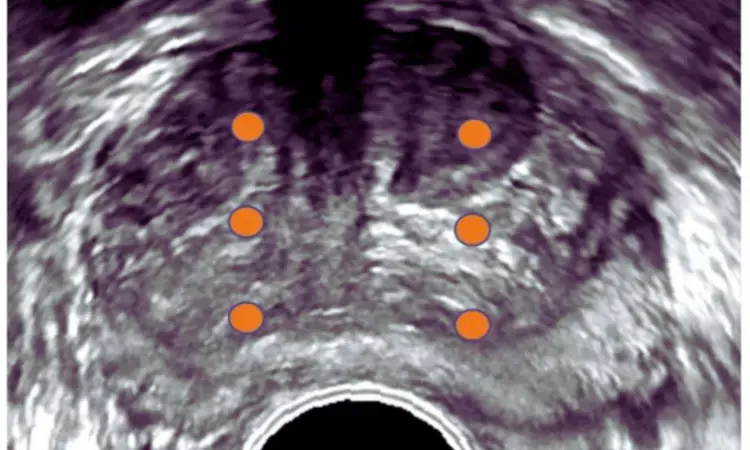- Home
- Medical news & Guidelines
- Anesthesiology
- Cardiology and CTVS
- Critical Care
- Dentistry
- Dermatology
- Diabetes and Endocrinology
- ENT
- Gastroenterology
- Medicine
- Nephrology
- Neurology
- Obstretics-Gynaecology
- Oncology
- Ophthalmology
- Orthopaedics
- Pediatrics-Neonatology
- Psychiatry
- Pulmonology
- Radiology
- Surgery
- Urology
- Laboratory Medicine
- Diet
- Nursing
- Paramedical
- Physiotherapy
- Health news
- Fact Check
- Bone Health Fact Check
- Brain Health Fact Check
- Cancer Related Fact Check
- Child Care Fact Check
- Dental and oral health fact check
- Diabetes and metabolic health fact check
- Diet and Nutrition Fact Check
- Eye and ENT Care Fact Check
- Fitness fact check
- Gut health fact check
- Heart health fact check
- Kidney health fact check
- Medical education fact check
- Men's health fact check
- Respiratory fact check
- Skin and hair care fact check
- Vaccine and Immunization fact check
- Women's health fact check
- AYUSH
- State News
- Andaman and Nicobar Islands
- Andhra Pradesh
- Arunachal Pradesh
- Assam
- Bihar
- Chandigarh
- Chattisgarh
- Dadra and Nagar Haveli
- Daman and Diu
- Delhi
- Goa
- Gujarat
- Haryana
- Himachal Pradesh
- Jammu & Kashmir
- Jharkhand
- Karnataka
- Kerala
- Ladakh
- Lakshadweep
- Madhya Pradesh
- Maharashtra
- Manipur
- Meghalaya
- Mizoram
- Nagaland
- Odisha
- Puducherry
- Punjab
- Rajasthan
- Sikkim
- Tamil Nadu
- Telangana
- Tripura
- Uttar Pradesh
- Uttrakhand
- West Bengal
- Medical Education
- Industry
Study Finds TD/PV Ratio Boosts Prostate Cancer Detection When Combined with PI-RADS

Japan: A recent retrospective analysis has highlighted the tumor diameter-to-prostate volume ratio (TD/PV) as an effective predictive marker for prostate cancer (PCa) and clinically significant prostate cancer (csPCa) in men undergoing MRI/transrectal ultrasound (MRI/TRUS) fusion-targeted biopsies.
Published in Urologic Oncology: Seminars and Original Investigations, the study demonstrated that incorporating TD/PV into the biopsy process enhanced prediction accuracy, surpassing traditional markers. Additionally, when combined with the prostate imaging-reporting and data system (PI-RADS), TD/PV further improved prediction accuracy, achieving AUC values of 0.861 and 0.845 for PCa and csPCa, respectively.
MRI, alongside PI-RADS and MRI/TRUS fusion-targeted biopsy, has significantly improved the accuracy of prostate cancer diagnosis. However, some suspected PCa lesions in PI-RADS categories 3 and 4 remain undiagnosed, pointing to the need for further refinement of diagnostic methods. The researchers suggest that the accuracy of MRI/TRUS fusion-targeted biopsy can be improved by incorporating lesion size and prostate volume (PV) into the PI-RADS evaluation.
To explore this, Shunsuke Miyamoto and colleagues from the Department of Urology at Hiroshima University Graduate School of Biomedical Sciences, Hiroshima, Japan, investigated how the TD/PV ratio could enhance the prediction of PCa and csPCa in PI-RADS categories 3–5 lesions. They also aimed to develop predictive nomograms that combined TD/PV and PI-RADS.
The researchers reviewed data from patients who underwent MRI/TRUS fusion-targeted biopsy for PI-RADS 2.1 categories 3–5 lesions between 2017 and 2023. TD/PV was calculated by dividing tumor diameter by total prostate volume, with csPCa defined as a Gleason score of ≥ 3+4. The predictive nomograms for PCa and csPCa were created using univariable and multivariable logistic regression. Their accuracy was evaluated using receiver operating characteristic (ROC) curves and the area under the curve (AUC).
Key findings from the study included:
- A total of 565 patients were analyzed.
- The AUC of TD/PV was significantly higher than that of PSA, tumor diameter, PSA density, and PI-RADS for predicting PCa (AUC: 0.840) and csPCa (AUC: 0.819).
- Multivariable analyses confirmed TD/PV as a significant predictive factor for both PCa and csPCa in MRI/TRUS fusion-targeted biopsy.
- Predictive nomograms combining TD/PV and PI-RADS were developed, with AUCs for PCa and csPCa predictions being 0.861 and 0.845, respectively.
"In the retrospective analysis, the combination of TD/PV and PI-RADS category significantly improved the prediction of PCa and csPCa in MRI/TRUS fusion-targeted biopsy, particularly for PI-RADS categories 3 and 4 lesions," the authors noted. "The predictive nomograms integrating TD/PV with PI-RADS provided a more accurate prediction of PCa and csPCa diagnoses."
They concluded, "These findings offer valuable insights for physicians, aiding in better decision-making regarding the indications for MRI/TRUS fusion-targeted biopsy."
Reference:
Kohada, Y., Miyamoto, S., Hayashi, T., Tasaka, R., Honda, Y., Ishikawa, A., Kobatake, K., Sekino, Y., Kitano, H., Goto, K., Ikeda, K., Goriki, A., Hieda, K., Kitamura, N., Awai, K., & Hinata, N. (2025). Utility of tumor diameter-to-prostate volume ratio for predicting the outcome of magnetic resonance imaging/transrectal ultrasound fusion-targeted biopsy. Urologic Oncology: Seminars and Original Investigations. https://doi.org/10.1016/j.urolonc.2025.03.021
Dr Kamal Kant Kohli-MBBS, DTCD- a chest specialist with more than 30 years of practice and a flair for writing clinical articles, Dr Kamal Kant Kohli joined Medical Dialogues as a Chief Editor of Medical News. Besides writing articles, as an editor, he proofreads and verifies all the medical content published on Medical Dialogues including those coming from journals, studies,medical conferences,guidelines etc. Email: drkohli@medicaldialogues.in. Contact no. 011-43720751


